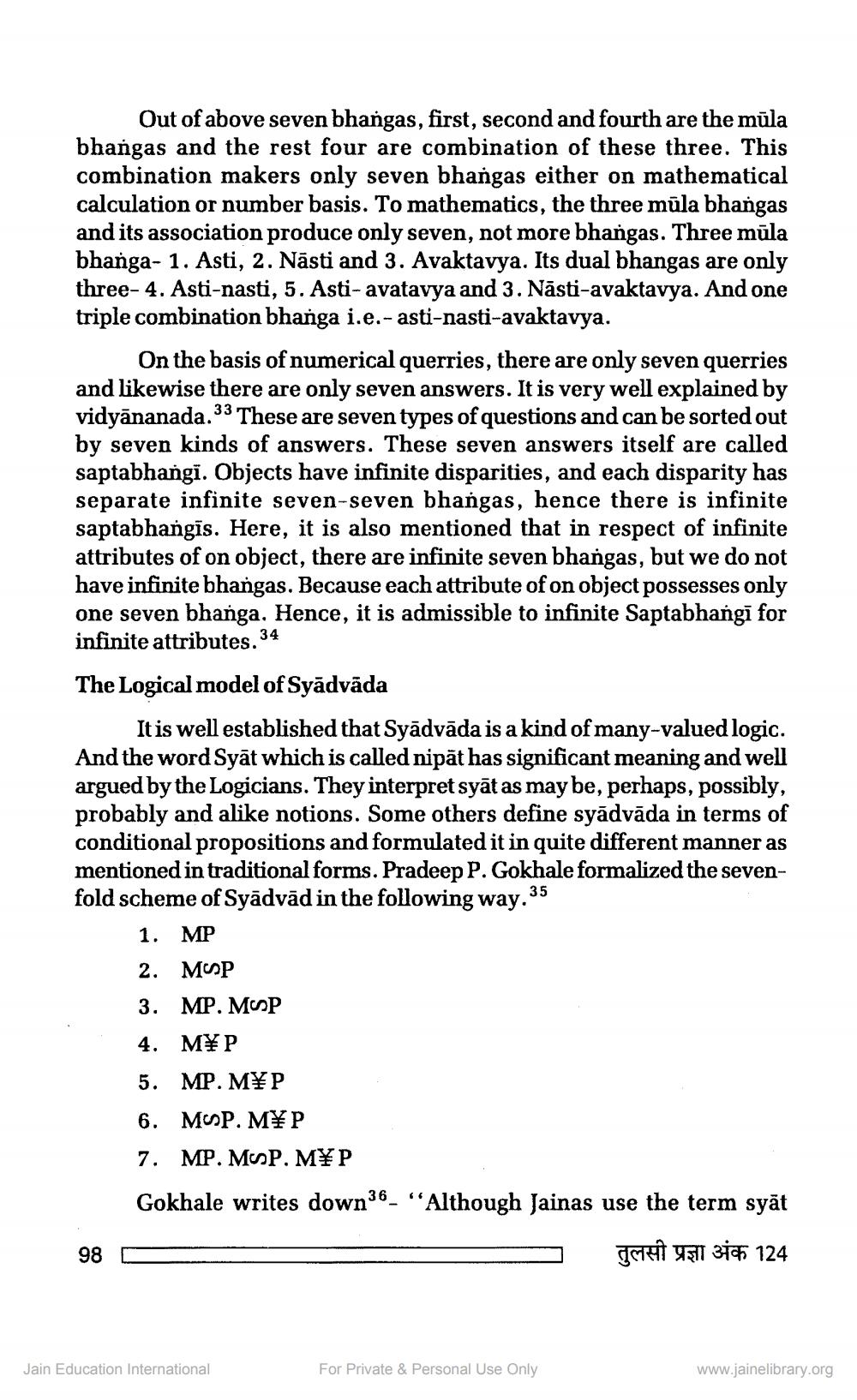________________
Out of above seven bhangas, first, second and fourth are the mūla bhangas and the rest four are combination of these three. This combination makers only seven bhangas either on mathematical calculation or number basis. To mathematics, the three mūla bhangas and its association produce only seven, not more bhangas. Three mūla bhanga- 1. Asti, 2. Nāsti and 3. Avaktavya. Its dual bhangas are only three- 4. Asti-nasti, 5. Asti-avatavya and 3. Nāsti-avaktavya. And one triple combination bhanga i.e.-asti-nasti-avaktavya.
On the basis of numerical querries, there are only seven querries and likewise there are only seven answers. It is very well explained by vidyānanada.33 These are seven types of questions and can be sorted out by seven kinds of answers. These seven answers itself are called saptabhangi. Objects have infinite disparities, and each disparity has separate infinite seven-seven bhangas, hence there is infinite saptabhangīs. Here, it is also mentioned that in respect of infinite attributes of on object, there are infinite seven bhangas, but we do not have infinite bhangas. Because each attribute of on object possesses only one seven bhanga. Hence, it is admissible to infinite Saptabhangī for infinite attributes.34 The Logical model of Syādvāda
It is well established that Syadvāda is a kind of many-valued logic. And the word Syāt which is called nipāt has significant meaning and well argued by the Logicians. They interpret syāt as may be, perhaps, possibly, probably and alike notions. Some others define syādvāda in terms of conditional propositions and formulated it in quite different manner as mentioned in traditional forms. Pradeep P. Gokhale formalized the sevenfold scheme of Syādvād in the following way.35
1. MP 2. MOP 3. MP. MOP 4. M¥P 5. MP. M¥P 6. MOP. M¥P 7. MP. MOP. M¥P Gokhale writes down36_ "Although Jainas use the term syāt
98 D
Intet uşil 31
124
Jain Education International
For Private & Personal Use Only
www.jainelibrary.org




